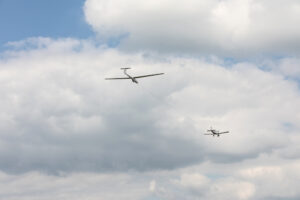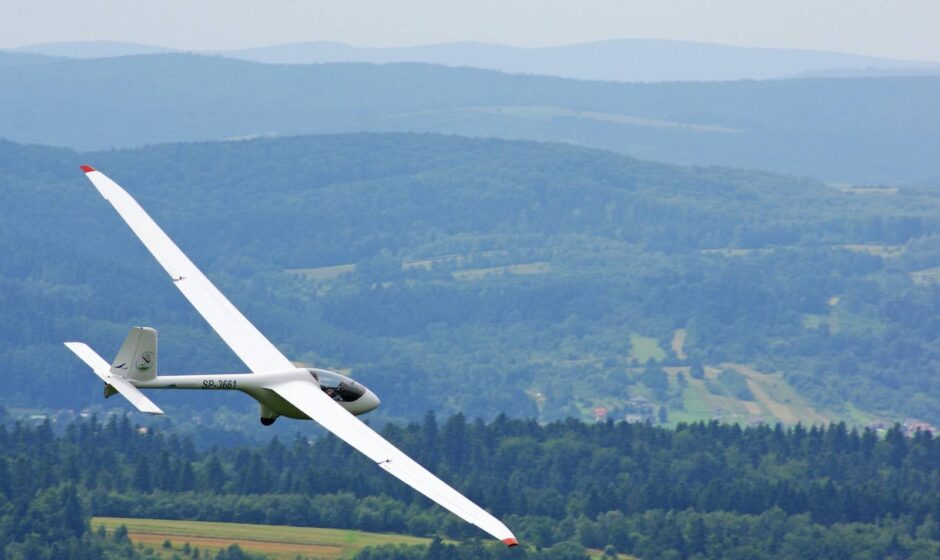Glider flights are cool and important. It’s beautiful, silent, and historic. No engine, just pilot skill and air flow. Gliders have been a favorite for years. Why? It’s thrilling and helps improve flying tech. Here, we look at gliders’ past, how they work, and standout designs. We’re revealing the magic of gliders.
The History of Gliders: Early Dreams of Flight
The concept of gliding traces back to ancient times when humans first envisioned soaring like birds. Early attempts included sketches by Leonardo da Vinci in the 15th century, detailing rudimentary flying machines. However, it wasn’t until the 19th century that the first practical gliders were built.
German aviation pioneer Otto Lilienthal is credited with making significant advancements in glider design during the 1890s. His successful flights laid the groundwork for powered aviation, influencing the Wright Brothers and others in their pursuit of controlled flight. Over the decades, gliders evolved from basic wood-and-cloth constructions to sleek, high-performance machines crafted from modern composites. Model planes, inspired by historical gliders, often replicate these fascinating designs, preserving their legacy for collectors and enthusiasts.
The Physics Behind Gliding: Harnessing Nature’s Forces
What sets gliders apart is their ability to remain airborne without an engine. This feat relies on the delicate interplay between aerodynamics and the natural environment. A glider’s wings generate lift, while the downward pull of gravity is counteracted by careful maneuvering and the exploitation of air currents.

Key forces at work include:
- Lift: Generated by the wings as air flows over them, keeping the glider aloft.
- Drag: A force that resists motion and must be minimized for efficiency.
- Gravity: Provides forward momentum as the glider descends gradually.
Pilots skillfully use rising air currents, or thermals, to gain altitude. Ridge lift, created when wind flows over hills or mountains, and wave lift, found in the lee of mountain ranges, are other phenomena that allow gliders to achieve remarkable heights and distances. Some modern custom airplane models even showcase these principles, offering enthusiasts a deeper understanding of aerodynamics.
Iconic Glider Models: Masters of the Skies
Throughout history, certain glider designs have stood out for their innovation and performance. These models have shaped both the sport of gliding and the broader field of aviation:
1. The SG-38 Schulgleiter: This German training glider from the 1930s was instrumental in teaching thousands of pilots. Its simple design and affordability made it a cornerstone of early glider instruction.
2. The Grunau Baby: Known for its versatility, this mid-20th-century glider became a favorite among recreational pilots and remains a classic in the gliding community.
3. The Perlan II: A modern marvel, the Perlan II is designed to explore the upper limits of the atmosphere, pushing the boundaries of human-powered flight.
Replicas and model airplanes of these iconic designs are popular among aviation enthusiasts, offering a tangible connection to these trailblazing machines.
Gliders in Modern Aviation
Gliding is popular today, not just for fun, but also for sports and science. Clubs worldwide provide glider training, creating a lively group of pilots. Competitions in gliding challenge the pilots. They must navigate, last long, and use warm air cleverly. In the science world, gliders are go-to tools.
Why Gliders Inspire Awe
Gliders capture the imagination by combining simplicity with sophistication. Their reliance on nature’s forces rather than mechanical power symbolizes harmony with the environment. The silent grace of a glider in flight, coupled with the skill and intuition required to pilot one, creates an unparalleled connection between human ingenuity and the natural world.
For collectors, enthusiasts, and pilots alike, the legacy of gliders is preserved through a variety of means. From flying restored gliders to showcasing detailed models, these efforts ensure that the history and art of gliding remain accessible to future generations.



